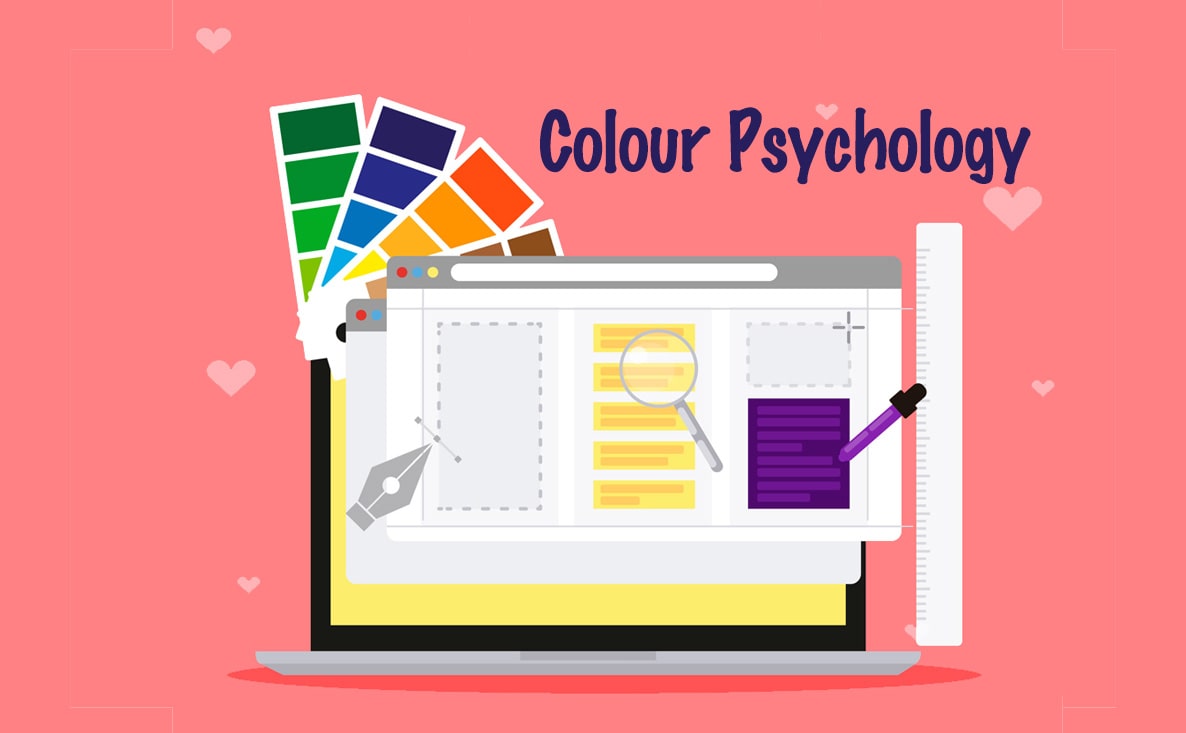The Role of Colour Psychology in Web Design – 10 Essential Points

Colour psychology plays a pivotal role in web design, influencing user experience, emotions, and engagement.
Additionally, By understanding the effects of colours on human emotions and behaviour, web designers can leverage the role of colour psychology to enhance user experience and improve their website’s Google ranking.
In this topic, we will explore the significance of colour psychology in web design and how it can contribute to a successful online presence.
1. The Basics of Colour Psychology:
To begin, Colour psychology is a field of study that examines how colours impact human behaviour and emotions. Various colours elicit unique feelings and associations. People often associate blue with feelings of trust and reliability, while they commonly link red to energy and a sense of urgency. By understanding these associations, web designers can intentionally use colours to shape user perceptions and reactions.
2. Branding and Colour Choices:
Colour choices play a crucial role in establishing a solid brand identity. Consistent use of colours that align with a brand’s personality and values helps create a memorable and recognizable visual identity. These branding and colour choices contribute to brand loyalty and recognition among users. Web designers should consider the brand’s target audience, industry, and desired brand attributes when selecting colours for the website.
3. Colours and Emotions:
Colours have the power to evoke different emotions and create specific associations. For instance, warm colours like red and orange often stimulate excitement and enthusiasm, while cool colours like blue and green can induce calmness and relaxation. By strategically incorporating colours that align with the intended emotional response, web designers can create a more impactful user experience that resonates with their target audience.
4. Enhancing Readability and Accessibility:
The choice of colours directly impacts the readability and accessibility of a website. It is crucial to consider colour contrast between text and background to ensure content is legible for all users, including those with visual impairments. Adhering to accessibility guidelines and utilizing colour contrast tools helps web designers create inclusive websites that are easily readable and accessible to a broader audience.
5. Conversions and Call-to-Action (CTA) Optimization:
Strategically chosen colours can influence user behaviour and increase conversions. When designing call-to-action buttons, selecting colours that contrast with the overall design attracts attention and encourages users to take action. Colours that align with a positive emotional response can also enhance the effectiveness of CTAs, resulting in higher conversion rates.

6. Cultural Considerations and Colour Symbolism:
Colours can carry different meanings and symbolism across cultures. Therefore, web designers must consider cultural considerations when selecting colours to avoid unintentional misinterpretations. Conducting research and seeking feedback from the target audience can help ensure that colour choices resonate positively and align with the intended message across different cultural contexts.
7. Google Ranking and User Engagement:
User engagement serves as a critical factor in Google’s ranking algorithm. Websites that provide a positive user experience, including visually appealing colour schemes, tend to have higher engagement metrics, such as longer time on site, lower bounce rates, and more page views. By effectively utilizing colour psychology, web designers can create engaging websites that positively impact their Google ranking.
8. Testing and Optimization:
Testing different colour combinations and monitoring user behaviour is essential for optimization. A/B testing enables the identification of the most effective approaches to colour choices for specific elements or pages on a website. Web designers can continuously analyze and optimize colour schemes based on user feedback and data to improve the overall user experience, conversions, and Google ranking.
9. Visual Hierarchy and User Attention:
Colour psychology aids in creating compelling visual hierarchies on websites. By strategically using contrasting colours, designers can guide users’ attention to essential elements such as call-to-action buttons, key messages, or important information. A well-designed visual hierarchy ensures that users focus on the most critical aspects of the website, leading to higher engagement and an improved user experience.
10. Case Studies:
Real-world examples of successful web designs that effectively leverage colour psychology provide valuable insights and inspiration for web designers. These case studies demonstrate the practical application of colour psychology principles in web design and highlight the positive outcomes achieved.
Conclusion:
In Conclusion, The Role of Colour psychology is a powerful tool in web design, influencing user experience, emotions, and, ultimately, a website’s success. By understanding the effects of colours, considering branding, optimizing for readability and accessibility, and leveraging colours strategically for conversions and user engagement, web designers can create visually captivating websites that drive positive user experiences and improve Google ranking.



